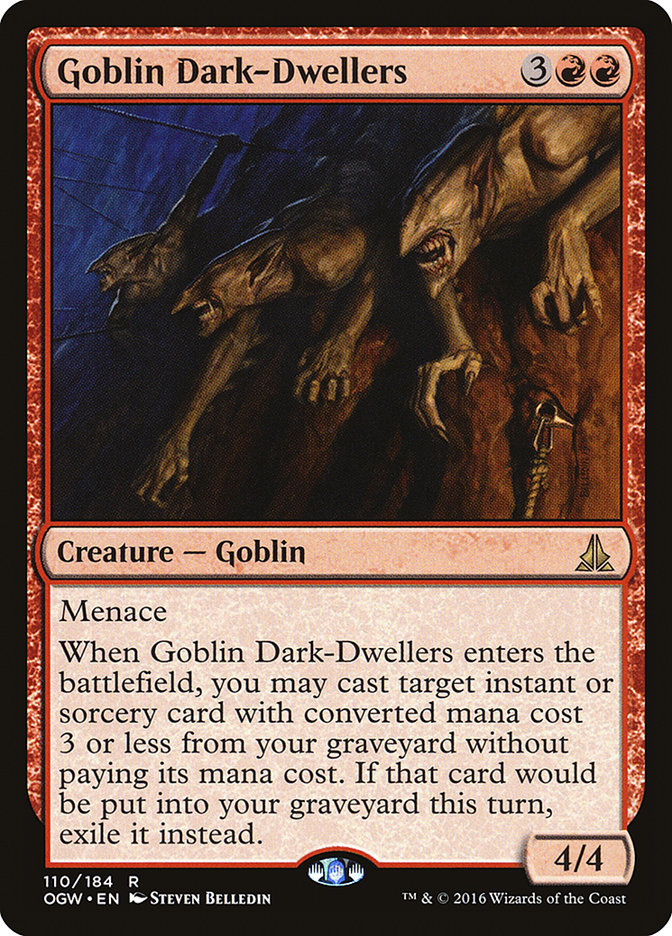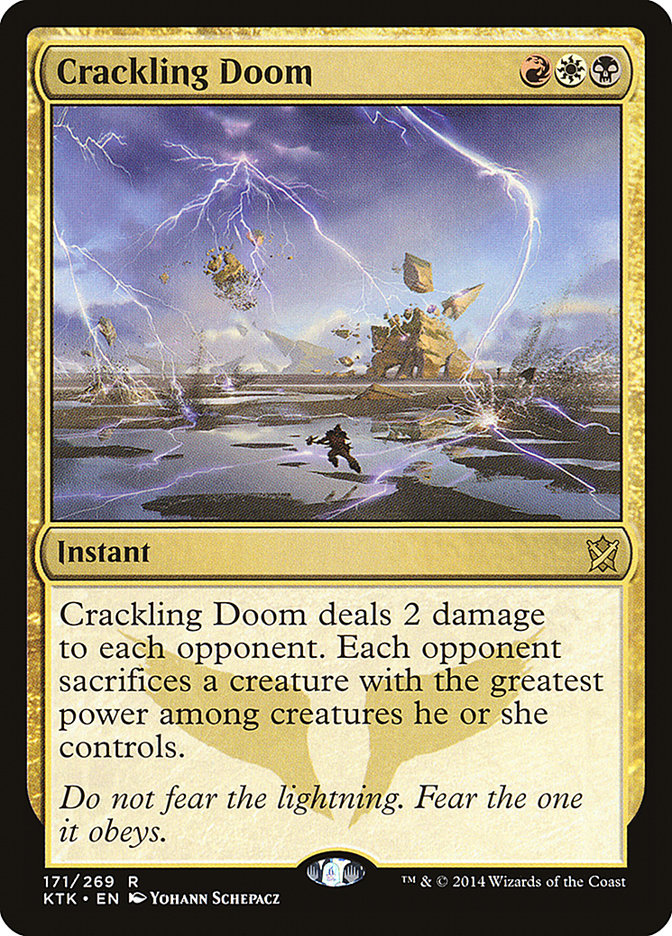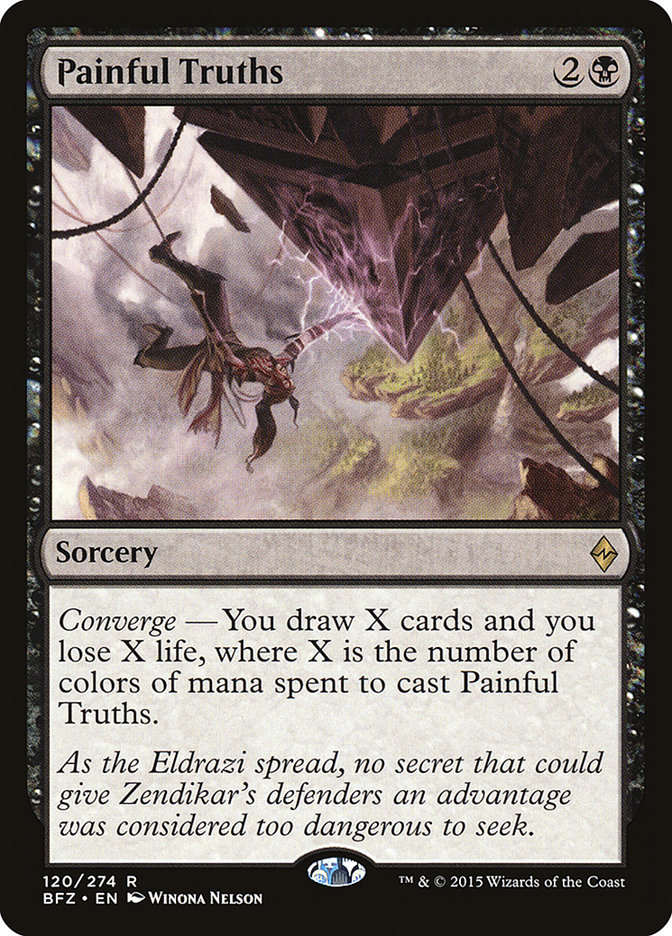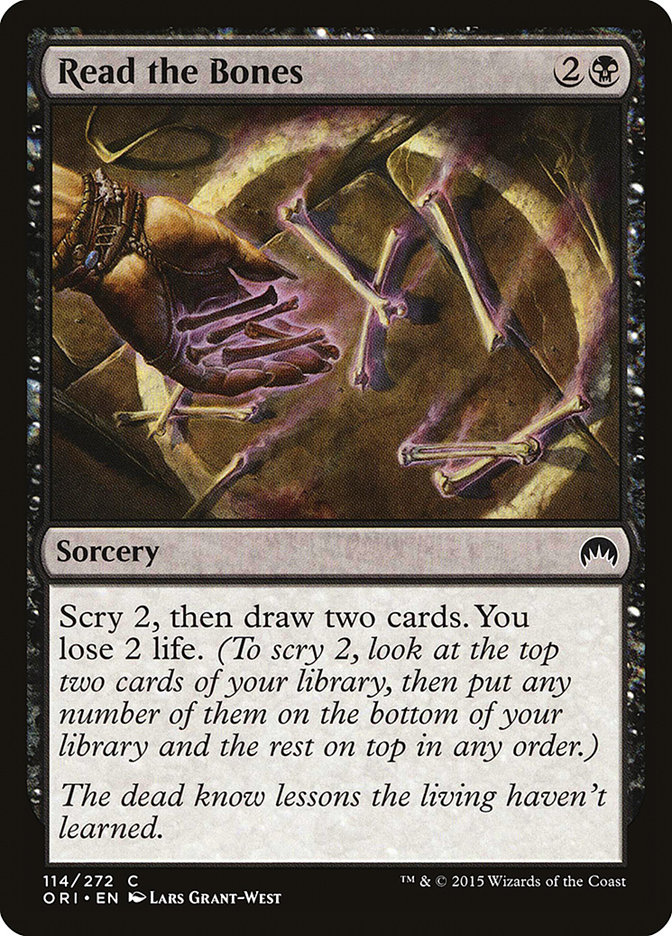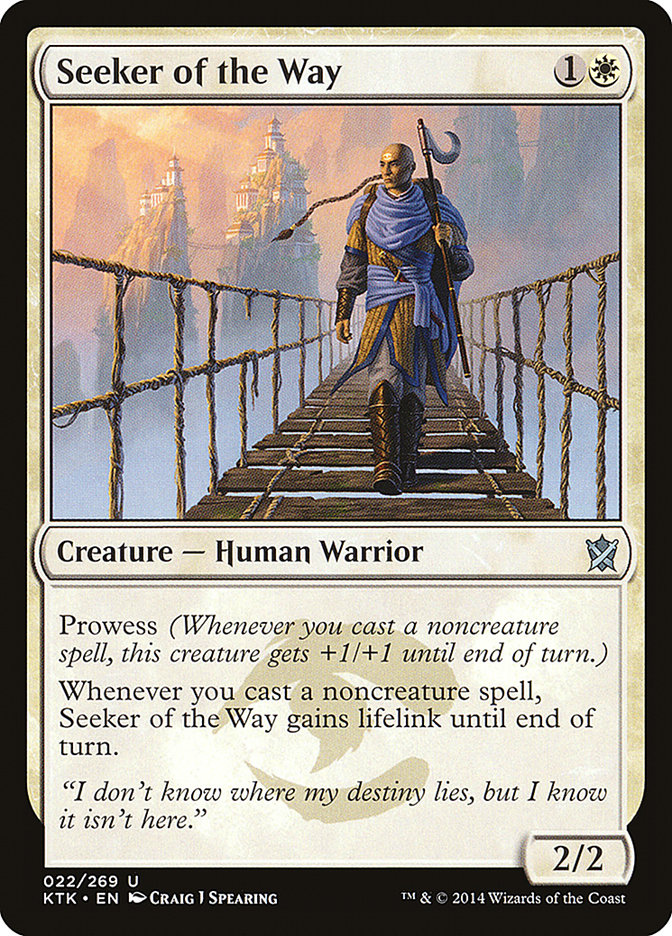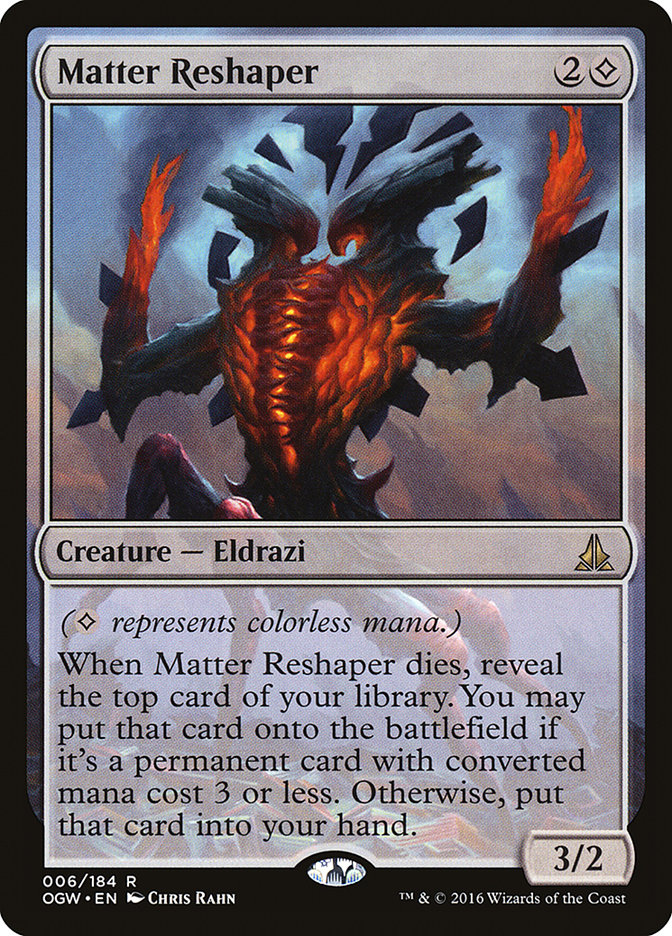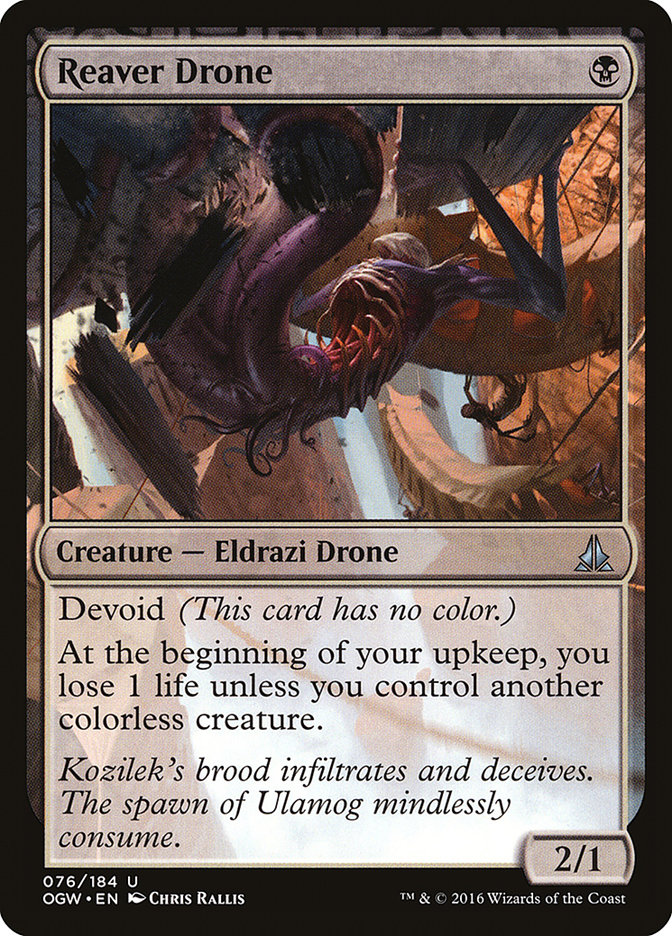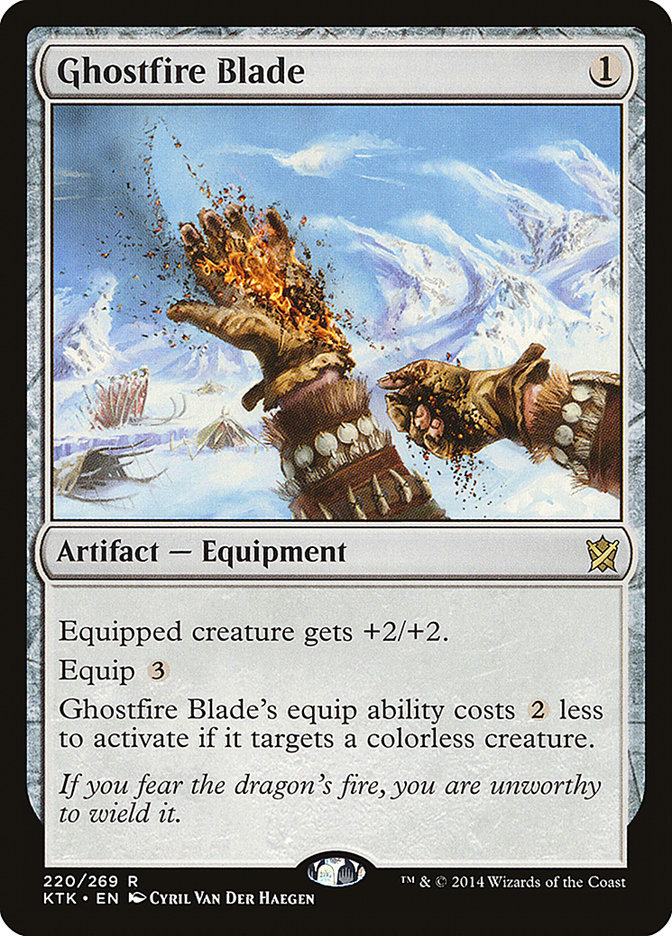Two weekends of Modern tournaments, and two weekends of less-than-desirable results. Each time, I played a deck that I thought would be a great metagame call. Each time, I walked away with very little to show for it and a sense of failure. Even though I just placed second at the most prestigious SCG Tour ® event, the #SCGPC, I can’t shake the feeling that I’ve lost something.
Why is it that each week, I tie my self-worth to my tournament results? The short answer is that I have a problem. That problem can be described a lot of different ways, but mostly I know that I can do better. I know that I could playtest more, make better decisions about my deck choices, card choices in those decks, sideboarding choices, and in playing the actual games. I could put more effort into it, but I actively choose not to. I would rather roll the dice and expect success than practice so that I make success more likely.
Just yesterday, Brad Nelson and Michael Majors asked if I would like to come over and playtest the new Standard format. With Oath of the Gatewatch being released in just a few weeks and the SCG Tour®coming to Atlanta for the first Standard Open with the new set, it should seem like a no-brainer. But I’m lazy, overconfident in my ability to “see it all” without actually putting in the work, and that will ultimately be my downfall.
I could tell you that this moment of self-realization is going to change my actions. I could tell you that I’m going to test for hours using these new cards in order to figure out the best configuration for whatever deck we end up playing, but I honestly don’t know if I am going to do that. I am not always a rational person. I understand that playing a few hours of Magic before a tournament is likely to help my chances, but I think a part of me wants to fail, or at least have a scapegoat when I do.
Like so many others who waste potential throughout their lives, the fear of failure is often the biggest deciding factor on whether or not we make our dreams into a reality. And so very often, dreams are not realized as a result of this fear. Fear can take on many shapes and sizes, pushing us in a direction that we never thought we would go, or keeping us from accomplishing the most mundane of tasks. And while it is not always a fear of failure, fear is what keeps us huddled inside that little box, dreaming of greatness while we fruitlessly reach towards the sky we can no longer see.
Or maybe I’m just really friggin’ lazy. Eh, I’m sure it lies somewhere in the middle.
…
The new Standard format is almost upon as, and Oath of the Gatewatch looks pretty awesome on the surface. But, like Battle for Zendikar, I’m sure there will be a lot more for us to comprehend once we actually start playing with the cards. Devoid and colorless mana are being pushed pretty hard, and it will be interesting to see what combinations of spells and lands end up making it to the Top 8 in the first few weeks. I would also love to see a resurgence in painlands like Caves of Koilos and the like in order to fuel colorless spells while also giving you the ability to play colored spells. Interestingly enough, colorless mana paired with a single color of mana such as black, gives you access to two different painlands to help with both colorless and your original color. With some key devoid creatures and spells, alongside something like Ghostfire Blade, I wouldn’t be surprised to see some hyper-aggressive colorless strategies in the first few weeks.
But aside from that, many of our favorite decks got a few upgrades. Jeskai Black and Mardu have access to Goblin Dark-Dwellers.
I think that this will be one of the most defining cards of the new Standard format, if only because it resembles a big Snapcaster Mage. Cards like Crackling Doom and Kolaghan’s Command fit alongside it perfectly, giving you a Flametongue Kavu with a bit of flair. While it doesn’t pair nicely with converge or the better delve spells (Dig Through Time, Murderous Cut, Treasure Cruise), I think it provides enough backbone in any spell-dense deck to act as both card advantage and a win condition. Using Kolaghan’s Command to bring it back is just disgusting.
The body and Menace ability should not be ignored, either. Many Mardu-type decks need a bigger threat to oppose an active Gideon, Ally of Zendikar. Goblin Dark-Dwellers does this on a few different levels, acting as a means of flashing back Crackling Doom to clear the way with small attackers or just re-using a Ruinous Path. While it is expensive, I think that the widespread adoption of Painful Truths has shown us that we can find ways to use an excessive amount of mana. Soulfire Grand Master and Shambling Vent make it so that we rarely feel like we’re flooding out, but now we have a big payoff spell once we hit five mana. The fact that Goblin Dark-Dwellers so perfectly fits the mold we’ve already created should be rather telling.
I’ve already begun to experiment with Read the Bones in place of Painful Truths, but it likely isn’t worth the overall downgrade. I found myself needing Goblin Dark-Dwellers to be a tempo play more often than a card advantage spell, and I don’t think losing that extra card for the sake of making Goblin Dark-Dwellers have one more target is worth it. Goblin Dark-Dwellers will be a card we don’t end up fully appreciating until it has been out for some time, but we do know that it is good. After casting it just a few times, I can already tell that I’m going to love it. The question after that is, how many do we want to play? I think the answer is closer to four than any other number, but adding or subtracting to the count should affect how you build the rest of your deck.
Creatures (13)
Lands (26)
Spells (21)

As always, this is a rough draft of what I think a new version of Mardu could be. And honestly, with the current manabase, I don’t see much reason why this couldn’t just be the starting shell for a Jeskai Black deck. The manabase is mostly the same, and we’ve already seen that splashing the fourth color in a Mardu or Jeskai shell isn’t exactly tough with the Battle lands. But before I went too deep on splashing a third color, I wanted to look at and feel out a strict Mardu base. It doesn’t have all the bells and whistles that come with playing Jace, Vryn’s Prodigy, but can play a much more aggressive game against control decks, which I like in theory.
I’m not sold that Seeker of the Way is actually a good card in the deck, though. Something like Hangarback Walker could end up being better, but I figured I’d try to start with a bunch of cheap creatures that could mitigate the life loss from Painful Truths while pressuring opponents that don’t put up early resistance. Cheap creatures also make Kolaghan’s Command better in the early turns, giving you a target to bring back while killing their creature. While Kolaghan’s Command is rather weak against Abzan Aggro, I think that the rise in Jeskai Black, Rally the Ancestors, and other small-creature decks makes Kolaghan’s Command worth playing the max.
The sideboard Gideon, Ally of Zendikar might seem odd, but I can assure you that there will be a lot of matchups where having so much removal is pretty bad. In those scenarios, or against decks that don’t put up a lot of pressure, having access to a slew of Gideons is a great option. One could argue that playing Gideon in the maindeck is a much better proposition, and they wouldn’t exactly be wrong, but I wanted to build the shell around Goblin Dark-Dwellers for now. After some testing, Gideon might pair perfectly with Gideon, but the theory is that we want most of our spells to be cheap as to maximize the effectiveness of both Goblin Dark-Dwellers and Painful Truths. Having too many expensive spells will lead to clunky draws that get us run over by Anafenza, the Foremost. Gideon isn’t exactly known to be stellar when you’re behind on board, where something like Seeker of the Way plus a removal spell could be just enough to pull you back into the game.
In a vacuum, Gideon is obviously a great card, but having a sideboard plan that allows you to morph away from a removal-heavy deck to increase your threat density is a good thing. Gideon is also significantly better in post-board games when the entire rest of your gameplan can be focused. In the first game of any given match, you’re sure to have some cards that are less than ideal, but once you can lower your curve and attack the opponent with specific cards, threats like Gideon are much more likely to take over the game. If you were to just throw Gideon into the maindeck of this deck, it might not function how you want it to. Our creatures aren’t exactly built around protecting him, after all.
Aside from Mardu and Jeskai Black, I’ve been working on a Devoid deck that uses Ghostfire Blade to hit the opponent hard and fast. Tom Ross has been working on something similar, which he may write about this week. I’m sure the two will look similar, as Oath of the Gatewatch has given us a lot of the tools in cookie-cutter fashion.
Creatures (26)
- 4 Bloodsoaked Champion
- 2 Reality Smasher
- 4 Thought-Knot Seer
- 4 Bearer of Silence
- 4 Reaver Drone
- 4 Matter Reshaper
- 4 Sky Scourer
Lands (24)
Spells (10)
Sideboard

I do this every time a new set comes out, and I always end up learning the same lessons. I tend to build a linear aggressive deck that doesn’t really attack from a great angle and ultimately falls short of doing anything particularly impressive. I don’t think this time is any different, but I just can’t help myself. I think people are sleeping on Ghostfire Blade with all of these Devoid creatures, and now a significant number of colorless creatures. I think Matter Reshaper and Thought-Knot Seer are phenomenal, while the rest of the deck will likely come up short. Bloodsoaked Champion and Reaver Drone give you some play in the early game, and you do have a few two-drop creatures that aren’t so bad, but overall I am not expecting much to come out of this deck. Just know that my heart is in the right place.
For one thing, it has been a while since we’ve seen a non-red deck in Standard take the crown as “best true aggressive strategy,” and I would like to see something like this overtake it. The colorless cards acting as a “sixth color” might be just the ones to do the trick. While this deck isn’t inherently busted, I do think that a lot of these creatures have significant abilities with low cost and a lot of upside. Matter Reshaper, for one, seems like an undercosted gem. While a 3/2 for three mana isn’t exactly exciting, any creature that can provide card advantage for free deserves a second look. The fact that it can also put the extra card you get into play is pretty absurd. I’m not saying this card is Bloodbraid Elf, but it does have the same power and toughness. I’m just sayin’.
The sideboard, as usual, is a trainwreck. I’ve never been great at building sideboards for decks like this, but I do know that these are the types of cards you’ll need to beat specific strategies. For the record, I don’t think this deck will ever beat a red deck, so I didn’t even bother. Aggressive black decks have traditionally been soft to little red goblins, and I don’t think this time will be any different. Your creatures are usually slightly bigger but come with significant downsides, or else they are able to go much wider than you without much effort. Hordeling Outburst, for example, does not seem like something we could handle without severe devastation to our own board. While Flaying Tendrils could be a great sideboard option against that deck, it hurts our own deck far too much to consider.
The biggest “combo” in the deck is Reaver Drone with Ghostfire Blade. A 4/3 attacking on turn 2 is nothing to scoff at and will give control decks a bit of pause. Unfortunately, one of the better control decks in the format has a lot of cheap removal. While this particular version might not be nearly good enough, just putting all the pieces together for the first time is important. We have to start connecting some of the pieces before we are able to put the whole puzzle together.
…
I’ll be honest, I don’t how the new set is going to affect Standard. I think Ramp decks might make a big splash, as both Kozilek’s Return and World Breaker seems like great additions to the strategy. Wastes could end up making Ruin in Their Wake a sustainable Rampant Growth, which is one card the deck really needed to break into Tier 1 status. All of these colorless and Devoid spells are confusing and hard to put together in a deck. But honestly, that might end up making this set much deeper than any of us know.
Until we’re able to get our hands on these cards and start playing with them, I don’t really know how the new Standard format is going to shape up. Established archetypes are going to be dominant in the early weeks of the format, simply because we have so much data on them already. It will take some time for people to develop new decks based on these mechanics, and they will ultimately fail until we can put everything together.
But with so much to work with, and to think about, I am very excited about playing the new Standard format when the SCG Tour® comes to Atlanta in two weeks for #SCGSTL. I’ll likely be casting Goblin Dark-Dwellers, but don’t be surprised if I’m in the Ramp Camp and shutting everyone down with World Breaker and Ulamog, the Ceaseless Hunger. Mana denial is incredibly powerful, and especially so when it can be recurring (see Acidic Slime, Restoration Angel, and Unburial Rites). Kozilek’s Return is a big deal, and you’d be doing yourself a disservice by not considering the deck yourself. You might just have a good time being the bad guy…

